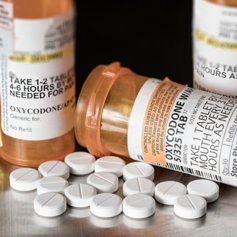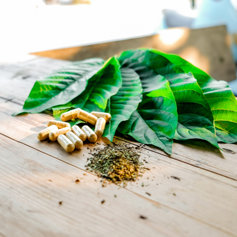Opioid Addiction Information

Opioids are a range of substances known for their pain-relieving properties and include drugs derived from the opium poppy plant, as well as synthetic drugs with similar composition.
What’s the difference between an opioid and opiate?
While some sources suggest opioids and opiates are two separate classes of drugs, opioids are actually a broad category that includes naturally occurring opiates and their synthetic derivates. In short, this means that all opiates are opioids, however, not all opioids are opiates.
To be more specific an opiate is a term used to describe drugs that are derived from opium—the dried white, milk-like substance taken from the pods of the opium poppy “Papaver somniferum.” Drugs derived from the naturally occurring substance are generally referred to as opiates. Some examples of opiates are codeine and morphine.
Opioids are a large class of drugs that includes opiates as well as synthetic and semi-synthetic derivatives, such as heroin, fentanyl, methadone and others.
Here’s a quick look at some different types of opioids:

- Heroin. Heroin is an illegal, highly addictive substance. It is processed from opium, the naturally occurring substance extracted from the seed pods of certain poppy plants. Heroin is processed using various chemicals and usually appears as a white or brown powder or as a sticky black tar-like substance. Heroin can be used through intravenous injection, or it can be snorted or smoked.

- Prescription opioids. Prescription opioids include manufactured opioids that are produced for use by medical practitioners to relieve physical pain. While prescription opioids are intended for medicinal use only, they can be abused. Such drugs include morphine, oxycodone, hydrocodone, codeine, hydromorphone, fentanyl, and meperidine.
- Methadone. While methadone is often used as a treatment method for opioid addiction, methadone is itself an addictive synthetic, narcotic drug. It is sometimes prescribed to treat pain and as a drug replacement in the treatment of addiction. Given the highly addictive nature of methadone, its use is not supported by most experts.

- Kratom. A tree native to Southeast Asia, the kratom tree produces leaves containing compounds that have psychotropic effects. Kratom has effects similar to opiates, though it has also been known to produce stimulant effects. Like other opiates, kratom interacts with the brain’s opioid receptors, producing sedation, pleasure, and a decrease in pain symptoms.
- Suboxone. Suboxone, a combination of buprenorphine and naloxone, is a partial opioid agonist—meaning it produces effects similar to opioids, but much of the psychotropic effect is blocked by the inclusion of naloxone. Like methadone, it is often used to treat addiction and while still addictive, has fewer side effects when used as a short-term medical taper.
Consequences of Use – Opioids Harm Multiple Areas of Life
Prolonged use of opioids creates significant harm in multiple areas of life. When used over a long period of time, physical dependence on the drug develops, requiring increasing amounts of the drug to achieve the same effect. This physical dependence results in intense cravings which prevent most users from stopping without help.
Physical Consequences of Opioid Use
The physical consequences of opioid use can vary widely. Such consequences depend on the route of administration, how much they’ve been using and how long. Physical effects can include drowsiness, mental fog, nausea, constipation, slowed breathing, and fatigue.
The most drastic physical consequence of opioid use is death, usually by overdose. Opioids can cause respiratory depression potentially leading to a fatal overdose. In 2018, more than 40,000 people died from opioid overdoses, and from 1999 to 2018, almost 450,000 people died from such overdoses in the United States.
Opioids and Relationships
When a person becomes addicted to opioids, the drug often becomes all encompassing to the detriment of their relationships with their loved ones. The more they use, the more they will prioritize their addiction over their spouse, their children, their parents, siblings, close friends, or work associates.
Substance abuse, in general, has distinct effects on families, none of them good. Opioid abuse, with the constant threat of overdose and death, plays a particularly harsh role on the family dynamic.
Opioids and Employment
Statistically speaking, employees who are addicted to opioids miss 18.5 more workdays per year than non-addicts, and only 58 percent of opioid users have the same employer for more than two years in a row (as compared to 75 percent of the general workforce population).
More sick days and a higher turnover rate is costly to businesses. Opioid-addicted employees spend five times as many days in the hospital each year than their non-addicted counterparts, often due to on-the-job accidents. All of these factors combine to make it more difficult for opioid addicts to keep their jobs and support themselves and their families financially.
Financial Consequences of Opioid Addiction
People who are addicted to opiates often struggle in maintaining a steady job. Their financial situation is further exacerbated by the fact that opioid addiction is quite expensive. One can easily spend well over $100 per day just to sustain a drug addiction, and that daily cost will increase as the individual requires more and more per day to avoid withdrawal symptoms.
Legal Consequences of Opioid Use
Illegal use of illicit opioids and diversion of prescription drugs from the legal market both create substantial legal repercussions for those involved. If one is caught, it may lead to arrest and incarceration. This is also true for those found with prescription opiates who do not have a legitimate prescription.
The Short-Term and Long-Term Effects of Opioid Use
The short-term effects of opioid use include drowsiness, slowed breathing, unconsciousness, nausea, constipation and coma. These effects begin shortly after the first use and with prolonged use can intensify and become life-threatening.

Repeated long-term use of opioids can lead to insomnia, heart infections, pneumonia, muscle pain and death.
Indicators of Use – How to Tell if a Loved One is Using Opiates
When someone is using opioids compulsively, their daily behaviors will center around finding and using the drug, then finding and using it again.
Physical, behavioral, and environmental signs of opioid use can include:
- Cravings for the drug
- Drowsiness
- Disappearing randomly and not coming back for long periods of time
- Missing work or school
- Changes in eating and sleeping habits
- Financial difficulties
- Isolation from family members, friends, and coworkers
- Lack of hygiene, a decrease in daily grooming habits
- Stealing from loved ones
- Legal problems
- Decreased sex drive
- Frequent, flu-like symptoms
- Weight loss
- Secretive, suspicious behavior
An addiction to opioids is a dangerous, potentially lethal problem. That’s why it is so crucial to be able to spot an opiate addiction in a loved one and to get them help as soon as possible.
Sources:
- https://www.drugabuse.gov/publications/research-reports/
heroin/what-heroin - https://www.hopkinsmedicine.org/opioids/what-are-opioids.html
- https://www.drugabuse.gov/publications/drugfacts/kratom
- https://www.merriam-webster.com/dictionary/methadone
- https://www.samhsa.gov/medication-assisted-treatment/treatment/buprenorphine
- https://medlineplus.gov/opioidmisuseandaddiction.html
- https://www.hopkinsmedicine.org/opioids/what-are-opioids.html
- https://www.cdc.gov/drugoverdose/epidemic/index.html
- https://www.ncbi.nlm.nih.gov/books/NBK64258/
- https://www.nsc.org/work-safety/safety-topics/drugs-at-work/substances
- https://www.drugabuse.gov/publications/opioid-facts-teens/
faqs-about-opioids - https://www.hopkinsmedicine.org/opioids/signs-of-opioid-abuse.html
